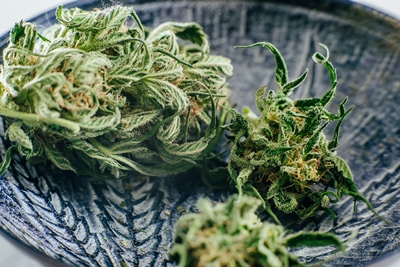SATT DOES NOT ACTIVELY MONITOR THIS TOPIC
The California Department of Food and Agriculture recently released its CalCannabis Cultivation Licensing Draft Program Environmental Impact Report. The intent of the PEIR is to conduct environmental review of the regulations and the activities proposed by CDFA to implement the Medical Cannabis Regulation and Safety Act and the Adult Use of Marijuana Act. Agencies and interested parties may provide input on the environmental analyses, mitigation measures, and alternatives associated with statewide cannabis cultivation until July 31 at 5 p.m.
MCRSA and AUMA establish a regulatory structure for cultivation, processing, manufacturing, tracking, quality control, testing, inspection, distribution and retail sale of commercial cannabis. CDFA is required to promulgate regulations to license commercial cannabis cultivation. It must also establish a “track-and-trace” system, which involves developing a unique identifier for each plant, a reporting system and documentation of the plants’ paths from cultivation to distribution as a commercial cannabis product.
The Draft PEIR, released June 15, identifies multiple impacts from CDFA’s implementation of the proposed regulations, such as those to agricultural resources, air quality, and hydrology and water quality. However, it concludes that none of those impacts (save to cultural and tribal cultural resources) require mitigation and that none of the impacts would be significant with the implementation of mitigation.
The Draft PEIR identifies the “No High-Intensity Grow Light Alternative” as the environmentally superior alternative. That alternative would require that all cannabis cultivation operations use natural light and/or low-intensity artificial light. This would eliminate the license types of indoor cultivation and would restrict mixed-light cultivation to the use of low-intensity lighting. In addition, outdoor licenses would not be allowed to use high-intensity grow lights for propagation. The alternative would include a track-and-trace component similar to that described for the proposed program. However, the Legislature would need to amend MCRSA and AUMA to allow this alternative’s implementation.
If you would like Best Best & Krieger to assist you with the preparation of comments on the Draft PEIR or with review of any cannabis-related legislation, please contact the authors of this Legal Alert listed to the right in the firm’s Special Districts, Environmental Law & Natural Resources or Municipal Law practice groups, or your BB&K attorney.
Please feel free to share this Legal Alert or subscribe by clicking here. Follow us on Facebook @BestBestKrieger and on Twitter @BBKlaw.
Disclaimer: BB&K Legal Alerts are not intended as legal advice. Additional facts or future developments may affect subjects contained herein. Seek the advice of an attorney before acting or relying upon any information in this communiqué.


